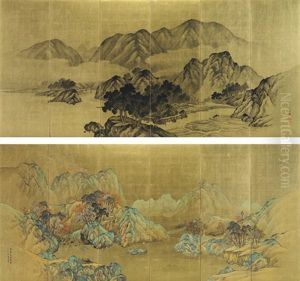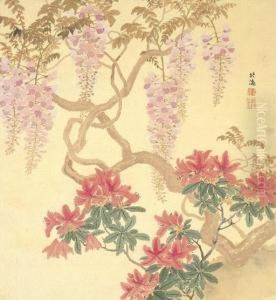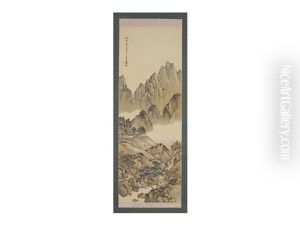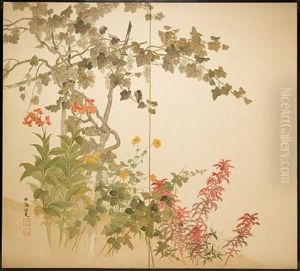Hokkai Takashima Paintings
Hokkai Takashima was a notable Japanese artist known for his contributions to Western-style painting (Yōga) during the Meiji and Taishō periods in Japan. Born on November 1, 1850, in Nagasaki, he was initially influenced by the influx of Western culture and technology that characterized the end of Japan's period of isolation. This was a time when Japan was opening up to the West, and many Japanese artists were exploring new techniques and artistic styles that were being introduced from Europe and America.
Takashima studied under the Dutch military doctor and painter Antonius Franciscus Bauduin in Nagasaki, which gave him a foundation in Western art practices. His talent and interest in Western-style painting grew, and he became one of the first Japanese artists to study abroad when he went to the United States in 1875. There, he attended the Pennsylvania Academy of the Fine Arts in Philadelphia, further developing his skills and knowledge of Western art.
After returning to Japan, Takashima took on the role of an educator and advocate for Western-style painting. He taught at the Tokyo Art School (now the Tokyo University of the Arts) and influenced a generation of Japanese artists. His painting style incorporated aspects of Romanticism and realism, and he is particularly known for his landscapes and seascapes. Takashima's works are characterized by their detailed depiction of nature and use of light, which he used to convey the beauty of the natural environment. Many of his paintings also reflect the changes in Japanese society and the landscape itself as the country modernized.
Hokkai Takashima's legacy is significant in the history of modern Japanese art. He played a crucial role in the development and acceptance of Western-style painting in Japan. He continued to paint and influence the art world until his death on August 28, 1931. His works are held in major collections and have been the subject of exhibitions, serving as a testament to his skill and his impact on the world of art in Japan.



